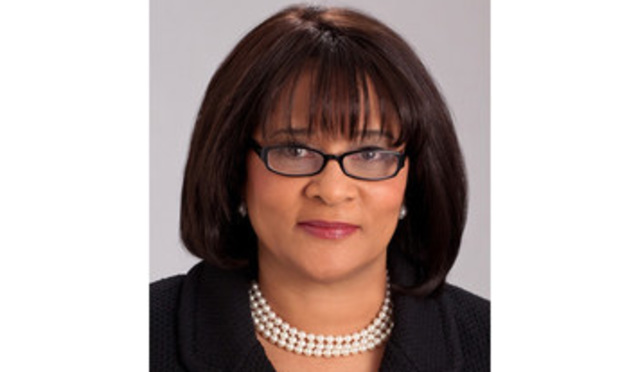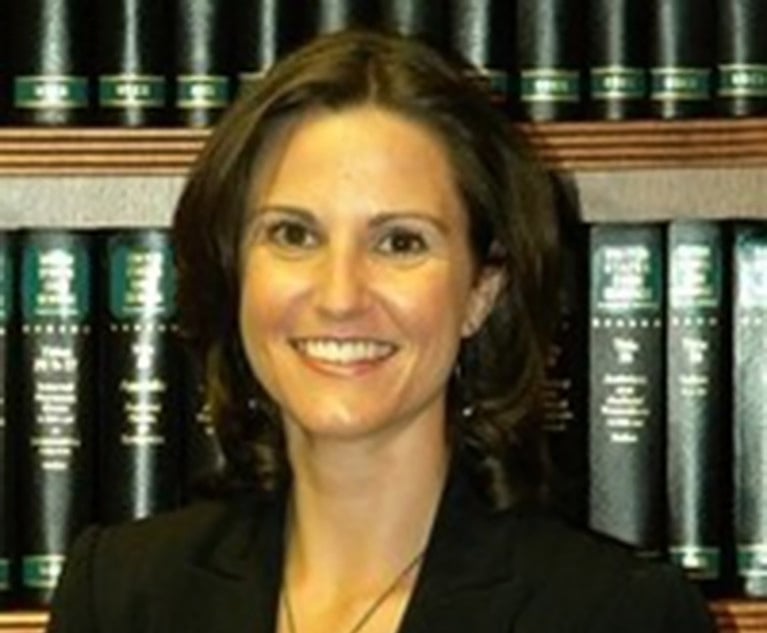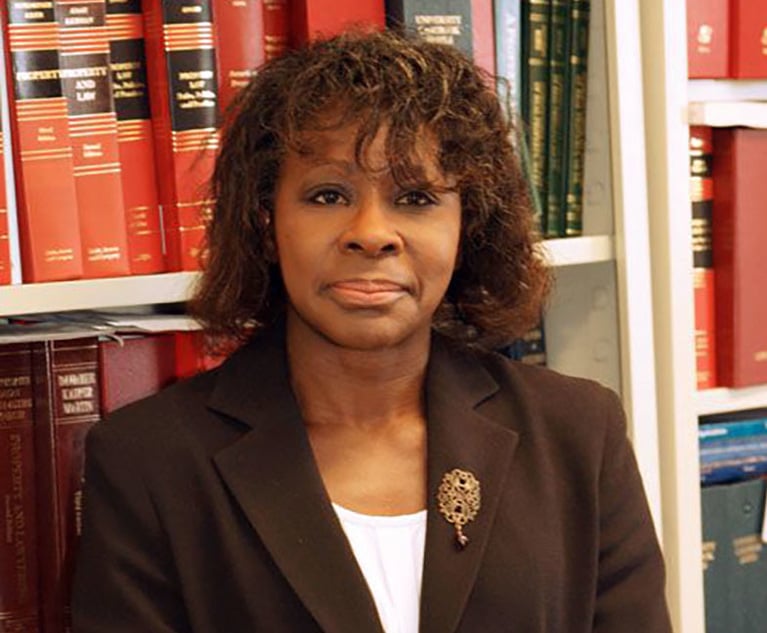Honoring Our History, Mission, and Values
Cheryl E. Chambers, Presiding Member of the NYSBA Judicial Section, reflects on the history of the Judicial Section and how the fundamental principles underpinning its formation are still relevant today.
January 11, 2019 at 11:12 AM
4 minute read
 Justice Cheryl E. Chambers
Justice Cheryl E. Chambers
Over the past year, the Judiciary has confronted many challenges that reinforce the importance of an independent judiciary and the value of working together as members of the Judicial Section to advance fairness, efficiency and justice for all. As members of the judiciary and the bar prepare to gather at the Judicial Section Awards Luncheon during the 2019 New York State Bar Association Annual Meeting, this is an occasion to reflect on the history of the Judicial Section and how the fundamental principles underpinning its formation are still relevant today.
At its Annual Meeting held on Jan. 20, 1923, the New York State Bar Association convened a meeting of judges in the state to obtain their views on the formation of a judicial section. On this question, Justice A.F.H. Seeger remarked: “It is regrettable that so many of the Justices in the State are not acquainted with each other and I think the creation of this Section would tend to bring the Justices nearer together, where they may exchange ideas, experiences and so promote the work and the cooperation of the Bench and the Bar.” The following year, Calvin Coolidge, just five months into his presidency, signaled support for legislation by which the procedure in the federal trial courts would be simplified to expedite the hearing and disposal of cases. Against this backdrop, Association members voted unanimously at the Jan. 19, 1924 Annual Meeting to form the Judicial Section as its first section. The Association had a keen appreciation of the role of the judiciary in advancing affirmative reforms.
The Judicial Section immediately commenced its tradition of providing a forum for constructive dialogue, featuring speakers who explore issues of substantive law, procedure and court administration. The goal of these new convenings was to provide a vehicle for the judiciary to consider and voice its perspectives as well as an opportunity for the Association to gain insights from the judiciary when developing and implementing policy positions. At that time almost a century ago, free speech, worker safety, immigration, gender and race were among the prevalent issues in court cases, the world of politics and the news.
To further the exchange of information and collaboration with the bar, as well as members of the bench, the section created a Council on Judicial Associations in 1971. Composed of the Chair of the Judicial Section and a delegate of each statewide and New York City judges' organizations and representatives from the U.S. District Courts, the Council serves as liaison with these organizations and members of the judiciary, as well as a clearinghouse for bar initiatives and a forum for the exchange of ideas on critical issues affecting the judiciary and the administration of courts.
In keeping with its historical roots and mission, the Judicial Section and the Council of Judicial Associations continues to bring together the most influential judicial and bar leaders to advance our perspectives within and through the New York State Bar Association. Further, we assemble, in New York City at the Judicial Section Luncheon during the Annual Meeting, to recognize distinguished members of the judiciary who have made outstanding contributions to the administration of justice.
During this year's luncheon on January 18, we will honor Hon. Raymond J. Lohier of the U.S. Court of Appeals for the Second Circuit; Hon. Alan D. Scheinkman, Presiding Justice, Appellate Division, Second Department; and Hon. Elizabeth A. Garry, Presiding Justice, Appellate Division, Third Department.
The luncheon program will feature Preet Bharara, former U.S. Attorney for the Southern District of New York, in conversation with Fordham University School of Law Dean Matthew Diller about new threats to the rule of law and how we can work together speak up for and protect the democratic values that we all hold dear.
The Judicial Section is an ideal place to take on these difficult questions and facilitate practical solutions because we bring together all parties for the sole purpose of advancing the rule of law and improving the judicial system. We believe that together we can make a difference.
Join us for the 2019 Judicial Section Awards Luncheon.
Cheryl E. Chambers is an Associate Justice of the Appellate Division, Second Department and has served as the Presiding Member of the Judicial Section and the Council of Judicial Associations since June 2018.
This content has been archived. It is available through our partners, LexisNexis® and Bloomberg Law.
To view this content, please continue to their sites.
Not a Lexis Subscriber?
Subscribe Now
Not a Bloomberg Law Subscriber?
Subscribe Now
NOT FOR REPRINT
© 2025 ALM Global, LLC, All Rights Reserved. Request academic re-use from www.copyright.com. All other uses, submit a request to [email protected]. For more information visit Asset & Logo Licensing.
You Might Like
View All


Trending Stories
- 1Thursday Newspaper
- 2Public Notices/Calendars
- 3Judicial Ethics Opinion 24-117
- 4Rejuvenation of a Sharp Employer Non-Compete Tool: Delaware Supreme Court Reinvigorates the Employee Choice Doctrine
- 5Mastering Litigation in New York’s Commercial Division Part V, Leave It to the Experts: Expert Discovery in the New York Commercial Division
Who Got The Work
J. Brugh Lower of Gibbons has entered an appearance for industrial equipment supplier Devco Corporation in a pending trademark infringement lawsuit. The suit, accusing the defendant of selling knock-off Graco products, was filed Dec. 18 in New Jersey District Court by Rivkin Radler on behalf of Graco Inc. and Graco Minnesota. The case, assigned to U.S. District Judge Zahid N. Quraishi, is 3:24-cv-11294, Graco Inc. et al v. Devco Corporation.
Who Got The Work
Rebecca Maller-Stein and Kent A. Yalowitz of Arnold & Porter Kaye Scholer have entered their appearances for Hanaco Venture Capital and its executives, Lior Prosor and David Frankel, in a pending securities lawsuit. The action, filed on Dec. 24 in New York Southern District Court by Zell, Aron & Co. on behalf of Goldeneye Advisors, accuses the defendants of negligently and fraudulently managing the plaintiff's $1 million investment. The case, assigned to U.S. District Judge Vernon S. Broderick, is 1:24-cv-09918, Goldeneye Advisors, LLC v. Hanaco Venture Capital, Ltd. et al.
Who Got The Work
Attorneys from A&O Shearman has stepped in as defense counsel for Toronto-Dominion Bank and other defendants in a pending securities class action. The suit, filed Dec. 11 in New York Southern District Court by Bleichmar Fonti & Auld, accuses the defendants of concealing the bank's 'pervasive' deficiencies in regards to its compliance with the Bank Secrecy Act and the quality of its anti-money laundering controls. The case, assigned to U.S. District Judge Arun Subramanian, is 1:24-cv-09445, Gonzalez v. The Toronto-Dominion Bank et al.
Who Got The Work
Crown Castle International, a Pennsylvania company providing shared communications infrastructure, has turned to Luke D. Wolf of Gordon Rees Scully Mansukhani to fend off a pending breach-of-contract lawsuit. The court action, filed Nov. 25 in Michigan Eastern District Court by Hooper Hathaway PC on behalf of The Town Residences LLC, accuses Crown Castle of failing to transfer approximately $30,000 in utility payments from T-Mobile in breach of a roof-top lease and assignment agreement. The case, assigned to U.S. District Judge Susan K. Declercq, is 2:24-cv-13131, The Town Residences LLC v. T-Mobile US, Inc. et al.
Who Got The Work
Wilfred P. Coronato and Daniel M. Schwartz of McCarter & English have stepped in as defense counsel to Electrolux Home Products Inc. in a pending product liability lawsuit. The court action, filed Nov. 26 in New York Eastern District Court by Poulos Lopiccolo PC and Nagel Rice LLP on behalf of David Stern, alleges that the defendant's refrigerators’ drawers and shelving repeatedly break and fall apart within months after purchase. The case, assigned to U.S. District Judge Joan M. Azrack, is 2:24-cv-08204, Stern v. Electrolux Home Products, Inc.
Featured Firms
Law Offices of Gary Martin Hays & Associates, P.C.
(470) 294-1674
Law Offices of Mark E. Salomone
(857) 444-6468
Smith & Hassler
(713) 739-1250







